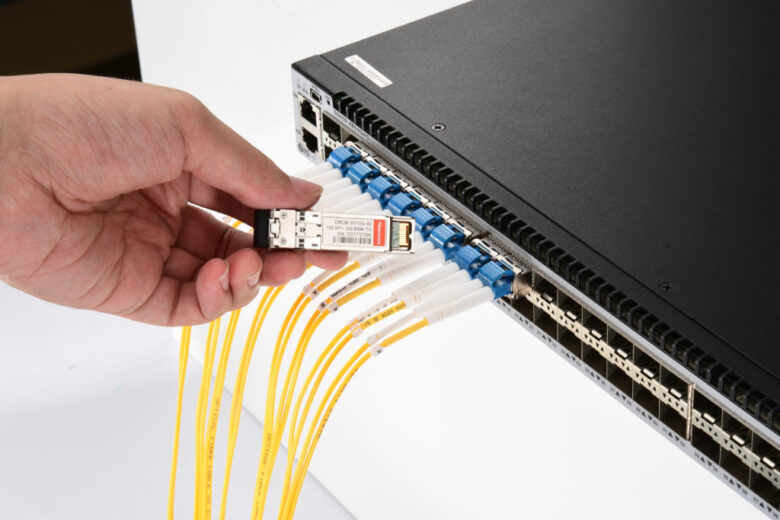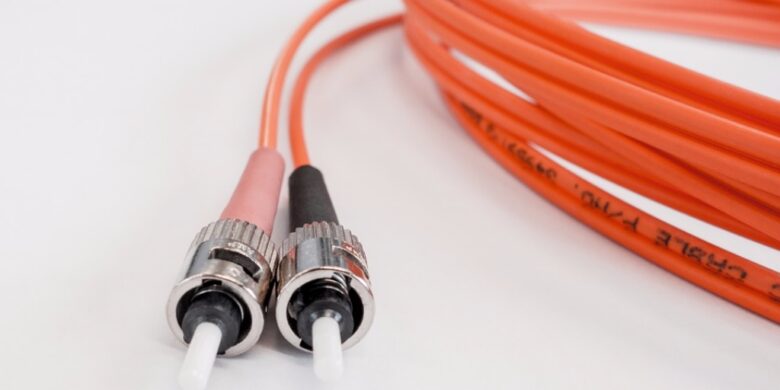Development of High-Speed Optical Modules

How Optical Transceiver Works
The optical module is mainly composed of an optical transmitter (Transmitter Optical Subassembly, TOSA), an optical receiver (ReceiverOptical Subassembly, ROSA), a high-speed transceiver integrated driver chip, and a controller (Microcontroller Unit, MCU).
TOSA converts electrical signals into optical signals, ROSA converts optical signals into electrical signals, and the high-speed transceiver driver chip is responsible for driving the light-emitting components and light-receiving components.
The MCU mainly has three functions: one is to exchange data with the host device (Host) in real-time, monitor the entire module system, manage the logic input and output of control signals, configure the function pins of the driver chip, and write the initialization configuration parameters;

Read the ambient temperature, update the bias current and modulation current of the driver chip in real-time, and perform temperature compensation on the laser to ensure that the output optical signal always meets the requirements of the transmission link. Intelligent monitoring of the road.
The specific working process is as follows: after the module is powered on, the MCU controller starts to work, which is responsible for configuring the driver chip and setting parameters; the high-speed transceiver driver chip starts to work normally after setting the parameters and converts the high-speed differential electrical signal received from the Host into the signal of the driving laser.
Bias current and modulation current, drive TOSA to emit light and transmit optical signal; the optical signal received from ROSA is converted into an electrical signal by ROSA and then sent to the high-speed transceiver driver chip limiting amplifier for amplification, and then sent to the Host for processing; MCU drives the driver The working parameters of the chip are adjusted in real-time, and the TOSA is controlled to maintain a stable working state under various environmental conditions. The MCU is interconnected with the driver chip through an input/output (I/O) interface and an I2C data interface.
Applications of Optical Transceivers

The optical module is the carrier used for transmission between switches and devices, and is the core device in the optical fiber communication system. The main function of the optical module is to realize the conversion of photoelectric signals in the optical communication network, which mainly includes two parts: the optical signal transmitter and the receiver.
Optical transceivers, optical transceivers, switches, optical network cards, optical routers, optical high-speed domes, base stations, repeaters, etc. Generally, the optical interface boards of transmission equipment are equipped with corresponding optical modules.
High-Speed Optical Transceivers Development

Optical modules are the basic building blocks of 5G bearer networks, data center interconnection, and all-optical access networks. With the rapid development of upper-layer business applications, data centers are gradually transitioning from 100Gb/s (click here) to 400Gb/s, and high-speed optical modules have become key elements of high bandwidth and wide coverage in various application fields.
This article will introduce the development trend of the high-speed optical module market and propose follow-up development suggestions.
According to Omdia data, the market size development trend of high-speed optical modules is shown in the figure below. In terms of 400Gb/s intensity modulation optical modules, 400Gb/s optical module products based on single-wavelength 100Gb/s have begun to occupy an important position in the deployment blueprint of operators and data centers, and there will be a large demand space in the next few years.
Among them, 400Gb/s DR4/FR4/LR4 optical module products have basically matured, and shipments have gradually increased based on market demand; 400Gb/s ER4 is expected to mature in 2024. In terms of 400Gb/s phase modulation optical modules, Acacia, Nanophotonics, etc. already have 80~120km coherent optical module product capabilities.
With the rapid growth of DCI demand, they will quickly occupy the main 400Gb/s coherent market in the next few years. In terms of 400Gb/s phase dry optical modules with transmission distances of 1000km and above, mainstream equipment manufacturers already have long-distance transmission capabilities based on probability shaping technology 90+GBd DP-16QAM-PCS, and domestic operators have completed 1000km transmission in 2024. The current network pilot; Using 128GBd DP-QPSK can theoretically achieve a longer transmission distance and is currently in the technical research stage.
According to the evolution trend of switching chips, market demand, and technology maturity, 800Gb/s intensity modulation optical modules will enter the market in 2024 and 2024 and will be applied on a large scale around 2026.
In the early stage, the 8×100Gb/s solution (2×400G CWDM4) will be used. The priority is to realize the smooth evolution from 400Gb/s to 800Gb/s. In terms of 800Gb/s phase modulation coherent optical modules, it is expected that the DP-16QAM code type non-pluggable modules will be commercialized earlier, and the pluggable modules are expected to enter the testing phase in the second half of 2024 and achieve small-scale commercial use in 2024.
In the longer term, with the continuous evolution of high-bandwidth chip devices and algorithm technology, the transmission distance of 800Gb/s coherent optical modules will develop from 80km and below to long-distance, and the application scenarios will gradually shift from DCI to metropolitan, provincial, and even Backbone network expansion.
Conclusion

The rapid development of 5G bearer, data center, and upper-layer business applications has brought opportunities and vitality to the optical module market, and it also poses higher challenges to optical modules such as high speed, high performance, low power consumption, and low cost, especially high speed is the core.
Demands, 400/800Gb/s high-speed optical modules are important technical nodes for various application scenarios. The upstream and downstream of the industry chain and all parties in the industry need to further strengthen cooperation, focus on consensus, and coordinate to promote the healthy development of the high-speed optical module technology industry from the aspects of strengthening technological innovation, guiding market aggregation and strengthening the industrial foundation.